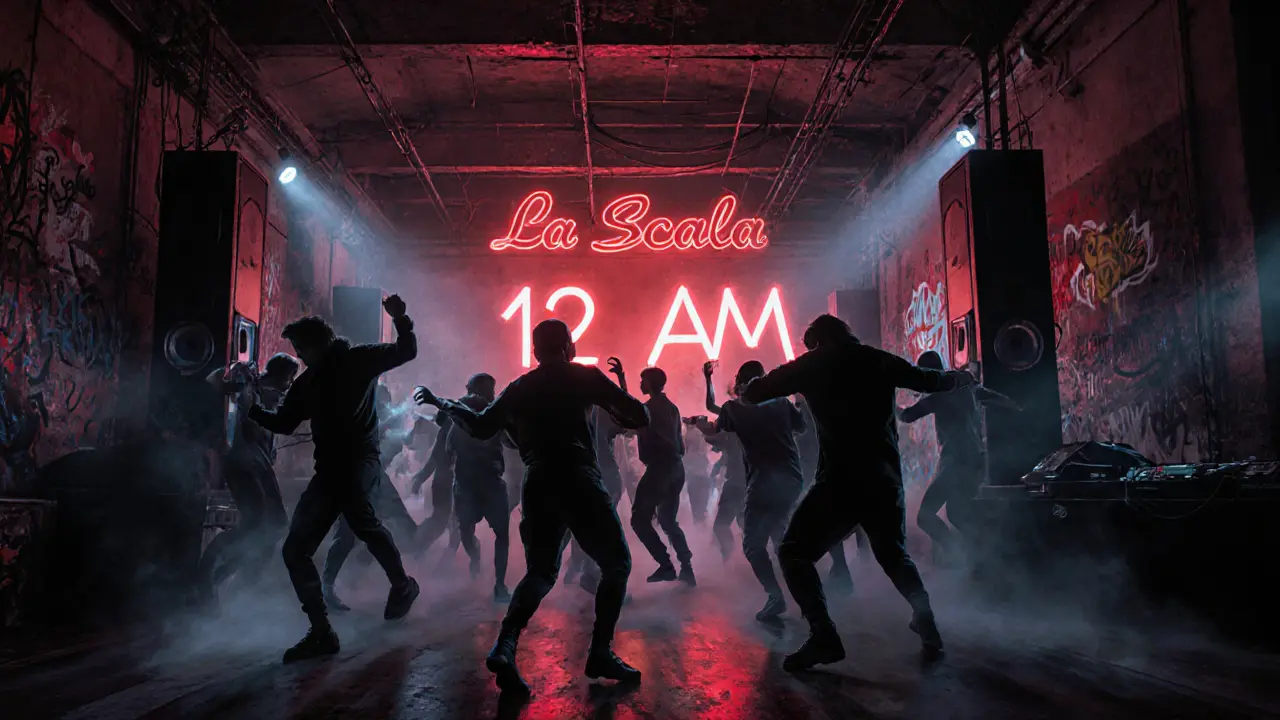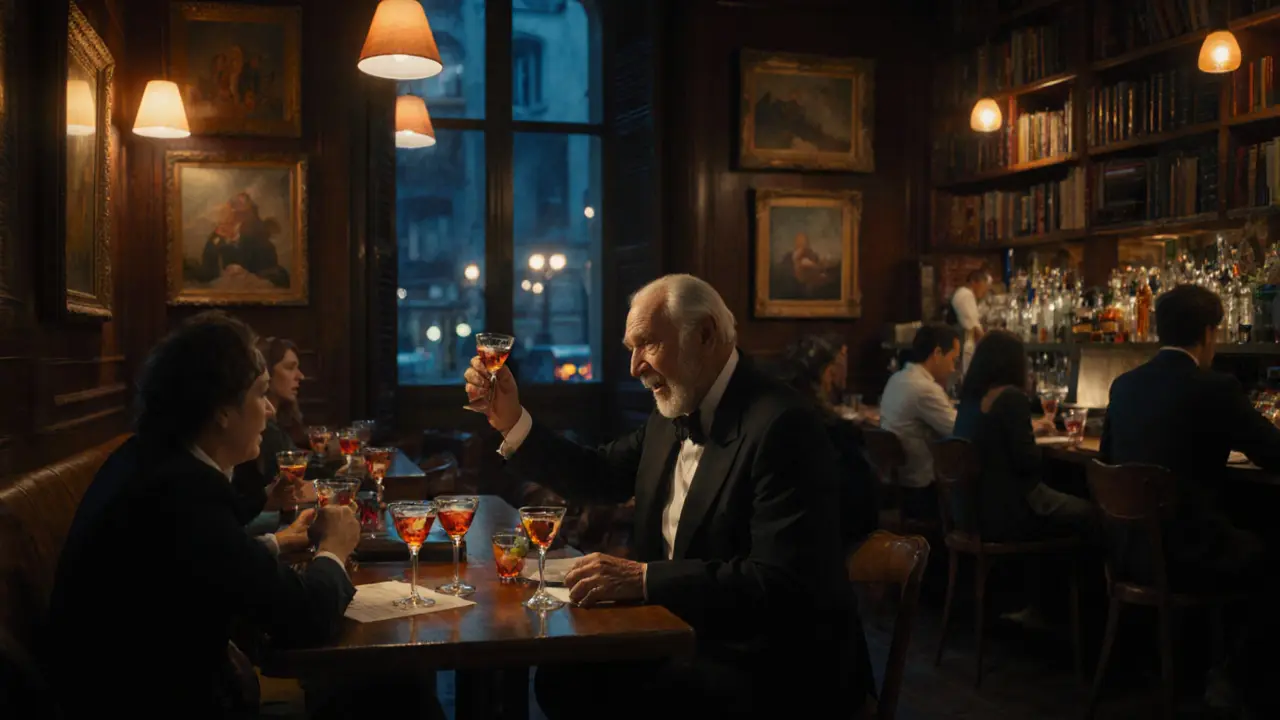Milan doesn’t sleep. Even at 2 a.m., the streets around Porta Nuova buzz with laughter, basslines echo from hidden courtyards, and cocktail shakers clink under dim amber lights. This isn’t just a city that has nightlife-it’s a city that lives for it. Forget the idea that Milan is all about fashion shows and boardrooms. When the sun goes down, the real Milan emerges: raw, stylish, and unapologetically alive.
Where the Locals Go After Dark
If you want to experience Milan like someone who’s lived here for years, skip the tourist traps near Duomo. Head to Brera instead. This historic neighborhood turns into a slow-burn party after 10 p.m. Bars here aren’t loud-they’re intimate. Try Bar Basso, where the Negroni was invented in 1945. Order one. Sip it slowly. Watch the regulars-lawyers, artists, retired opera singers-swap stories like they’ve been doing for decades. It’s not a club. It’s a ritual.
Just a few blocks away, Bar del Fico turns into a wine bar by night, then a jazz lounge by midnight. No sign. No queue. Just a narrow doorway tucked between a bookstore and a tailor. Inside, vinyl spins, candles flicker, and the bartender knows your name by your third drink. This is Milanese nightlife: understated, personal, and unforgettable.
Clubbing Like a Pro: The Top Spots
For real club energy, you need to go beyond the city center. La Scala isn’t the opera house-it’s a warehouse-turned-club in the Niguarda district. This is where underground techno thrives. Doors open at midnight. The sound system? Custom-built by Italian engineers. The crowd? Mostly locals in all-black outfits, no phones out, just bodies moving in sync. Expect a 10-euro cover. No VIP tables. No bottle service. Just pure, unfiltered sound.
On weekends, Magazzini Generali in the Porta Venezia area becomes a cultural event. It’s not just music-it’s art installations, live painting, and DJs who play from 11 p.m. to 6 a.m. without stopping. The crowd is mixed: students, designers, expats, and Milanese grandmas who still dance like they’re 25. Bring cash. Credit cards aren’t always accepted. And don’t bother with fancy clothes-comfortable shoes matter more than a designer jacket.
For something more polished, Le Jardin in the Brera district offers a hybrid: rooftop lounge by 9 p.m., dance floor by 1 a.m. The view of the city skyline is worth the wait. Dress code? Smart casual. No sneakers. No hats. The DJ plays a mix of deep house and Italian disco-think Giorgio Moroder meets modern beats. It’s not cheap, but it’s the closest thing Milan has to a luxury night out.
Bars That Define the City’s Vibe
Milan’s bar scene isn’t about quantity-it’s about quality. Take Bar Basso again. It’s not the biggest, but it’s the most influential. Their Negroni uses a secret blend of gin, Campari, and vermouth that’s been unchanged since 1945. You’ll pay 18 euros for it. But you’re not paying for alcohol. You’re paying for history.
For something newer, try Il Salotto in the Zona Tortona district. It’s a speakeasy-style bar hidden behind a bookshelf. You need a reservation. The cocktails? Handcrafted with local herbs, Italian spirits, and zero pretension. The bartender might ask you what mood you’re in-then mix you something you didn’t know you needed. One signature drink: La Notte di Milano-gin, lavender syrup, and a splash of sparkling wine. Served in a chilled glass with a single ice cube. No garnish. Just elegance.
Don’t miss Bar Luce, designed by filmmaker Wes Anderson. It’s part café, part art piece. The tiles, the seating, the menu-all meticulously curated. It’s open during the day, but at night, it becomes a quiet retreat for creatives. Order an espresso. Sit by the window. Watch the city pass by. This isn’t a party spot. But it’s where ideas are born.

Lounges That Feel Like Home
Some nights, you don’t want to dance. You want to talk. To breathe. To feel the city without the noise. That’s where lounges come in.
La Perla in the Navigli district is a hidden gem. It’s a canal-side lounge with velvet couches, low lighting, and a playlist of 70s Italian pop. No DJs. No flashing lights. Just a glass of Prosecco, the sound of water lapping against the dock, and the occasional laugh from a couple sharing a plate of aged cheese. Open until 2 a.m. on weekends. Closed Mondays.
Then there’s Chicco d’Oro in the heart of the fashion district. It’s owned by a former model turned mixologist. The drinks are inspired by Milan’s architectural history-each cocktail named after a building. The Torre Velasca is smoky, bitter, and complex. The Duomo is sweet, floral, and light. You don’t just drink here-you experience the city through taste.
When to Go and What to Wear
Milan’s nightlife doesn’t start early. Most places don’t fill up until after 11 p.m. Clubs don’t hit their stride until 1 a.m. If you show up at 9 p.m., you’ll be one of the first. That’s fine if you want to grab a good seat. But if you want to feel the energy? Wait.
Dress code varies. In Brera and Navigli, jeans and a nice shirt are fine. In clubs like La Scala or Le Jardin, you’ll get turned away for sneakers or shorts. Men: no tank tops. Women: no flip-flops. It’s not snobbery-it’s tradition. Milanese people dress for the night like they’re going to a gallery opening. Even if they’re just going for a drink.
Weekends are packed. Fridays and Saturdays are the only nights you’ll find real crowds. Sundays? Quiet. Most places close early. If you want to party until dawn, stick to Friday and Saturday.

How to Get Around
Public transport runs until 1:30 a.m. on weekdays, 2:30 a.m. on weekends. After that, you’ll need a taxi or ride-share. Uber isn’t always reliable here. Try Bolt or Free Now-they’re cheaper and more common. A ride from Porta Nuova to Niguarda costs about 15 euros. Walk if you can. Milan’s streets are safe at night, and the city looks magical under the lights.
Don’t rely on Google Maps for nightlife spots. Many bars don’t have official addresses. Ask locals. Say, “Dove si va a bere bene stasera?” (“Where do you go to drink well tonight?”). You’ll get a smile and a real recommendation.
What to Avoid
Stay away from bars near the Duomo that advertise “happy hour” with neon signs. These are tourist traps with overpriced drinks and fake cocktails. The same goes for clubs that promise “international DJs” but play the same Top 40 hits every night. Milan’s nightlife is about authenticity. If it looks like a theme park, it probably is.
Don’t bring large groups. Milanese nightlife thrives on small, intimate gatherings. A group of six or more will feel out of place in most spots. Stick to three or four people. You’ll get better service, better music, and better memories.
And never try to haggle over prices. Drinks are what they are. If you don’t like the cost, go somewhere else. The locals don’t complain. They just move on.
Final Tip: The Unwritten Rule
There’s one thing no guidebook will tell you: Milanese nightlife is about rhythm. Not speed. Not noise. Not volume. It’s about the slow build-the way a cocktail is poured, the way a song fades into the next, the way a conversation lingers long after the last sip.
You won’t find a place here that’s open 24/7. You won’t find a club that plays EDM from midnight to sunrise. What you’ll find is something better: a city that knows how to enjoy the night without rushing it.
What time do clubs in Milan usually open?
Most clubs in Milan open around midnight and don’t get busy until 1 a.m. Some, like La Scala and Magazzini Generali, don’t even start playing music until 1:30 a.m. If you show up earlier, you’ll likely be the only one there. The real energy starts after 2 a.m.
Is Milan nightlife safe at night?
Yes, Milan is generally very safe at night, especially in popular nightlife areas like Brera, Navigli, and Porta Venezia. Stick to well-lit streets, avoid isolated alleys after 3 a.m., and keep your belongings close. Like any big city, petty theft can happen, but violent incidents are rare.
Do I need to make reservations for bars in Milan?
For popular spots like Il Salotto or Bar Luce, yes-reservations are required, especially on weekends. For most other bars and lounges, no. Walk-ins are welcome, but you might wait for a table during peak hours. It’s always better to call ahead if you’re with a group.
What’s the average cost of a drink in Milan?
A cocktail in a trendy bar costs 14-20 euros. A beer at a local pub runs 6-8 euros. In clubs, expect to pay 12-18 euros for a drink, and 10 euros for entry. Lounges like La Perla charge similar prices to bars-no hidden fees. Cash is still king in many places, so carry some euros.
Are there any age restrictions for clubs in Milan?
Yes. Most clubs require you to be at least 18 years old. Some upscale venues, like Le Jardin, enforce a 21+ policy. Always carry a valid ID-even if you look older. Bouncers check IDs regularly, especially on weekends.
